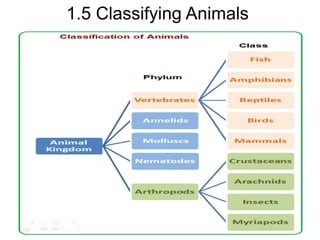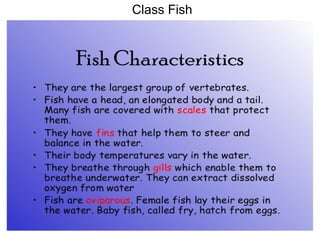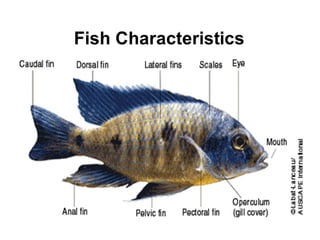IGCSE Biology - classifying animals phylum vertebrates - five classes
- 4. Phylum Vertebrates Vertebrates are animals with backbones. They are divided into 5 groups called classes: Fish, Amphibians, Reptiles, Birds and Mammals.
- 6. Class Fish
- 8. Notes ŌŚÅ Periophthalmus barbarus - mudskippers in The Gambia ŌŚÅ Sharks practice internal fertilisation.
- 15. Class Birds, also known as Aves, are a group of endothermic vertebrates, characterised by feathers, toothless beaked jaws, the laying of hard-shelled eggs, a high metabolic rate, a four-chambered heart, and a strong yet lightweight skeleton
- 18. COMMON NAME: Platypus SCIENTIFIC NAME: Ornithorhynchus anatinus TYPE: Mammals DIET: Carnivores SIZE: Head and body, 15 in; tail, 5 in WEIGHT: 3 lbs
- 19. The platypus is among nature's most unlikely animals. In fact, the first scientists to examine a specimen believed they were the victims of a hoax. The animal is best described as a hodgepodge of more familiar species: the duck (bill and webbed feet), beaver (tail), and otter (body and fur). Males are also venomous. They have sharp stingers on the heels of their rear feet and can use them to deliver a strong toxic blow to any foe. https://www.youtube.com/watch?v=QNoQvjlmGdk BBC The life of Mammals ŌĆō David Attenborough https://www.youtube.com/watch?v=2lCKc8tURtc&list=PLD941E65FBD70DB46




















